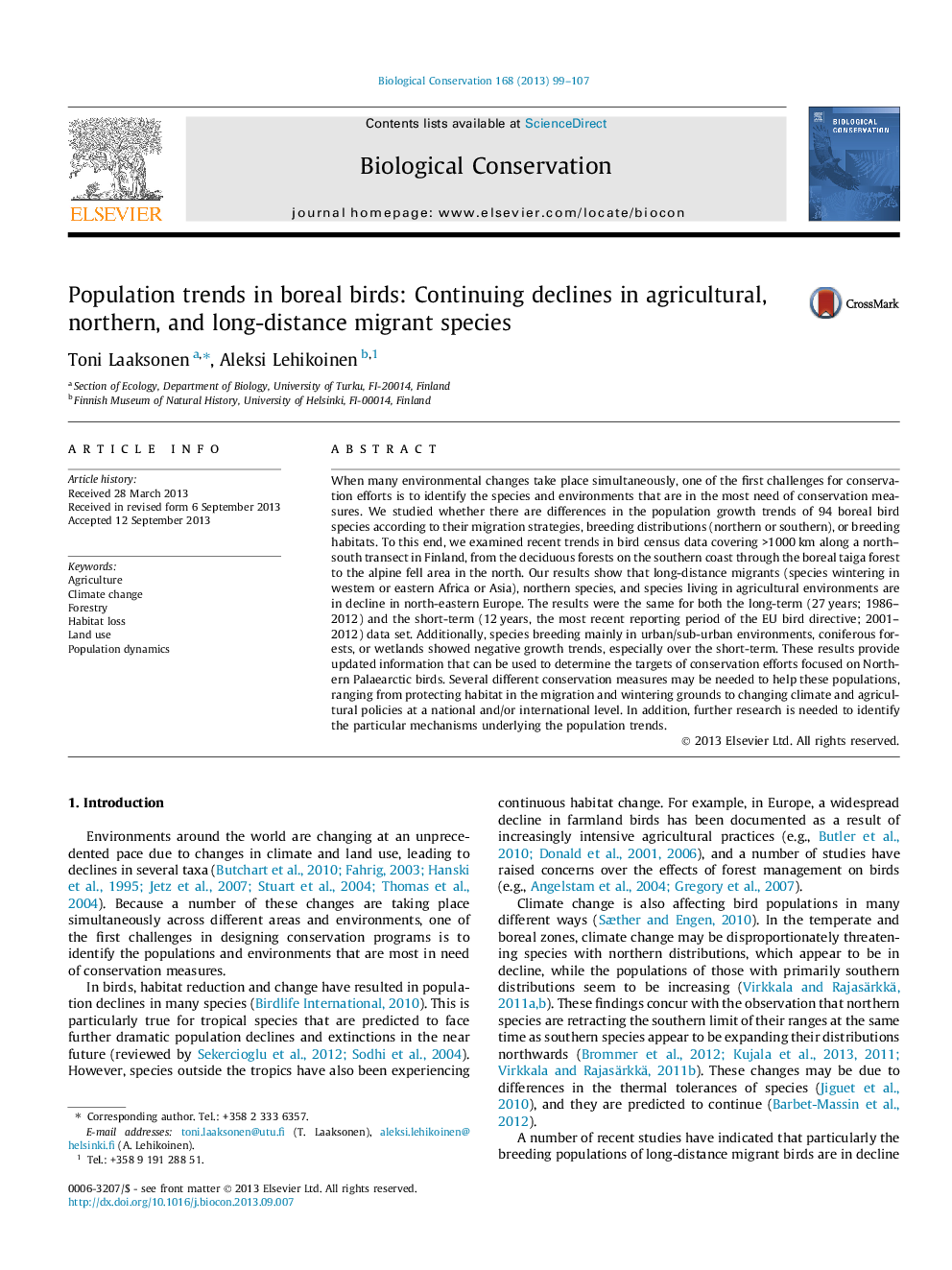| Article ID | Journal | Published Year | Pages | File Type |
|---|---|---|---|---|
| 6300345 | Biological Conservation | 2013 | 9 Pages |
Abstract
When many environmental changes take place simultaneously, one of the first challenges for conservation efforts is to identify the species and environments that are in the most need of conservation measures. We studied whether there are differences in the population growth trends of 94 boreal bird species according to their migration strategies, breeding distributions (northern or southern), or breeding habitats. To this end, we examined recent trends in bird census data covering >1000Â km along a north-south transect in Finland, from the deciduous forests on the southern coast through the boreal taiga forest to the alpine fell area in the north. Our results show that long-distance migrants (species wintering in western or eastern Africa or Asia), northern species, and species living in agricultural environments are in decline in north-eastern Europe. The results were the same for both the long-term (27Â years; 1986-2012) and the short-term (12Â years, the most recent reporting period of the EU bird directive; 2001-2012) data set. Additionally, species breeding mainly in urban/sub-urban environments, coniferous forests, or wetlands showed negative growth trends, especially over the short-term. These results provide updated information that can be used to determine the targets of conservation efforts focused on Northern Palaearctic birds. Several different conservation measures may be needed to help these populations, ranging from protecting habitat in the migration and wintering grounds to changing climate and agricultural policies at a national and/or international level. In addition, further research is needed to identify the particular mechanisms underlying the population trends.
Related Topics
Life Sciences
Agricultural and Biological Sciences
Ecology, Evolution, Behavior and Systematics
Authors
Toni Laaksonen, Aleksi Lehikoinen,
